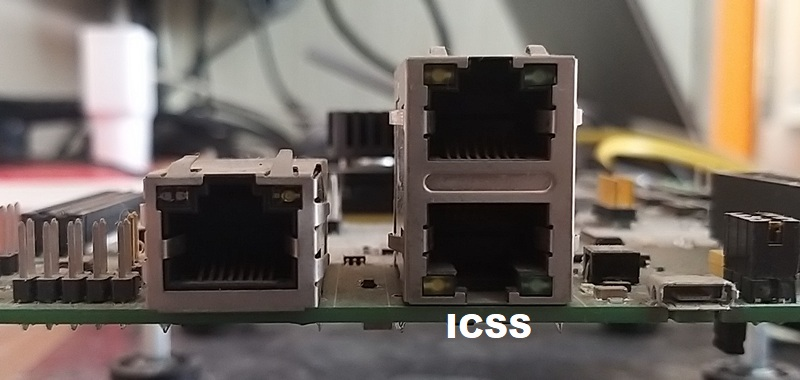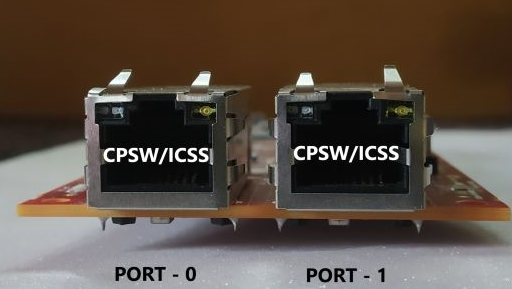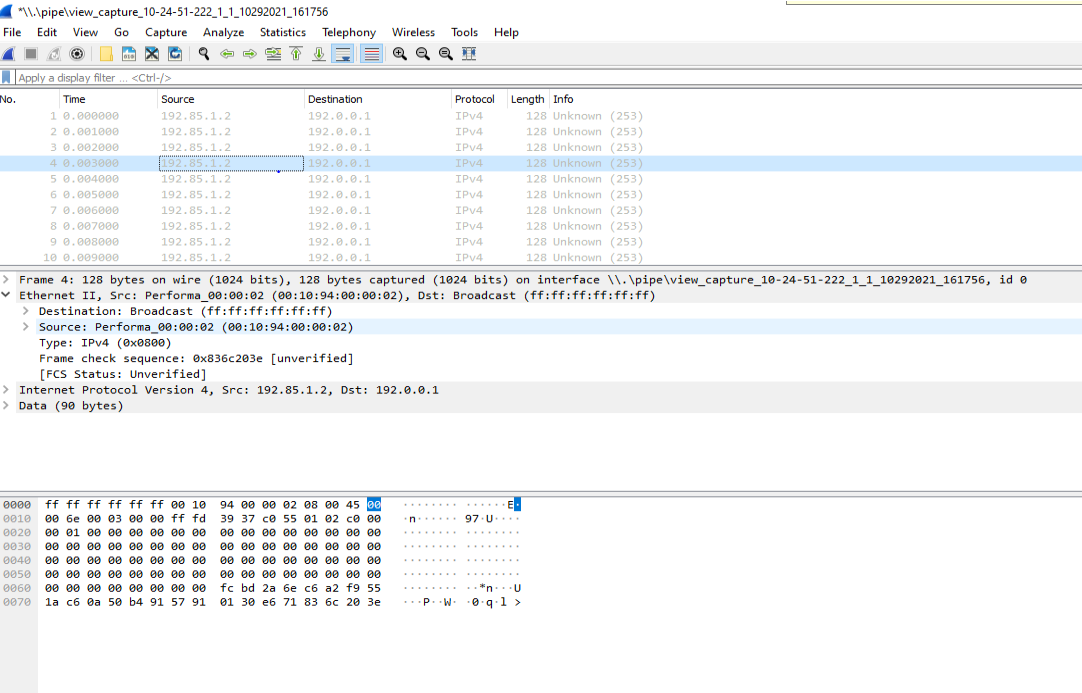This layer 2 icssg example demonstrates usage of Enet with ICSSG peripheral operation.
==========================
MULTIPORT TEST
==========================
Init all peripheral clocks
----------------------------------------------
Enabling clocks!
Open all peripherals
----------------------------------------------
Init configs EnetType:2, InstId :1
----------------------------------------------
icssg1: Open port 1
icssg1: Open port 2
EnetPhy_bindDriver:
PHY 3 is alive
PHY 15 is alive
icssg1: Register async IOCTL callback
icssg1: Register TX timestamp callback
Attach core id 1 on all peripherals
----------------------------------------------
icssg1: Attach core
Create RX tasks
----------------------------------------------
icssg1: Create RX task
icssg1: Waiting for link up...
Enet Multiport Menu:
'T' - Enable timestamp prints
't' - Disable timestamp prints
's' - Print statistics
'r' - Reset statistics
'm' - Show allocated MAC addresses
'd' - Enable dscp based priority mapping
'x' - Stop the test
EnetPhy_bindDriver:
Icssg_handleLinkUp:
Icssg_handleLinkUp:
icssg1: Port 1 link is up
icssg1: Set port state to 'Forward'
icssg1: Async IOCTL completed
icssg1: Async IOCTL completed
icssg1: Port 2 link is up
icssg1: Set port state to 'Forward'
icssg1: Async IOCTL completed
icssg1: Async IOCTL completed
icssg1: Open DMA
initQs() txFreePktInfoQ initialized with 8 pkts
icssg1: Set MAC addr: 70:ff:76:1d:92:c1
icssg1: MAC port addr: 70:ff:76:1d:92:c1
Invalid option, try again...
Enet Multiport Menu:
'T' - Enable timestamp prints
't' - Disable timestamp prints
's' - Print statistics
'r' - Reset statistics
'm' - Show allocated MAC addresses
'd' - Enable dscp based priority mapping
'x' - Stop the test
s
Print statistics
----------------------------------------------
icssg1 - PA statistics
--------------------------------
port1Q0Overflow = 234
icssg1 - Port 1 statistics
--------------------------------
rxGoodFrames = 25337838
rxClass8 = 25337838
rxClass9 = 25337838
rxBucket2SizedFrame = 65535
rxTotalByte = 3243243264
rxTxTotalByte = 4294967295
txGoodFrame = 25337838
txBucket3SizedFrame = 65535
txTotalByte = 3445945968
icssg1 - Port 2 statistics
--------------------------------
rxGoodFrames = 25337838
rxClass8 = 25337838
rxClass9 = 25337838
rxBucket2SizedFrame = 65535
rxTotalByte = 3243243264
rxTxTotalByte = 4294967295
txGoodFrame = 25337604
txBucket3SizedFrame = 65535
txTotalByte = 3445914144


